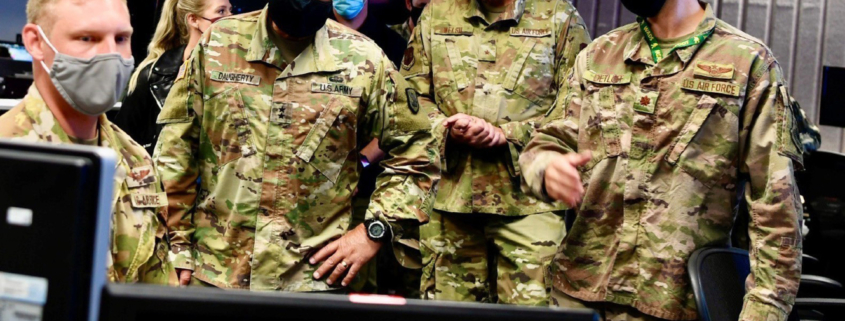To Build Joint Command and Control, First Break Joint Command and Control
The crowd favorite in the Korean War section of the National Museum of the U.S. Air Force is a B-29 Superfortress known as Command Decision. Named after a 1948 movie that recounted the Army Air Forces’ decision-making during World War II, the plane shot down five MiG-15 fighters, dropped over one million pounds of bombs, and has iconic nose art featuring two of the seven dwarfs — Dopey and Doc — waiting apprehensively for a flipped coin to land.
Behind the Command Decision is a smaller, less popular exhibit about command and control during the Korean War. The exhibit includes a diagram illustrating how command and control was organized at the time — it offers a visual of how messages were relayed and who assigned resources to specific tasks. That picture is notable because, with minor changes, it could feature in any of the museum’s sections. It depicts a hierarchical, industrial-age structure, and could describe command and control in World War II, during the wars in Iraq and Afghanistan, or at any point in the intervening period.
While still not exactly a crowd favorite, command and control is currently experiencing something of a renaissance as U.S. military leaders seek more interoperability between the different military services, less hierarchy in military networks, and systems that enable faster decision-making. The military has requested $3 billion to remake the system. The problem, though, is that the effort is focused almost entirely on the technology of command and control. The Defense Department is currently buying modular communications equipment that can connect people regardless of military service, building universal networks and data repositories, and developing decision-support tools that rely more on machine learning. While this technological disruption is necessary, it is insufficient.
The organizational structure of command and control should also be changed. The U.S. military should break up its current command and control system and replace it with small, modular teams that are not strictly aligned with a particular military service. This would help the system to deliver operational outputs faster and from multiple services at a given time. This…


